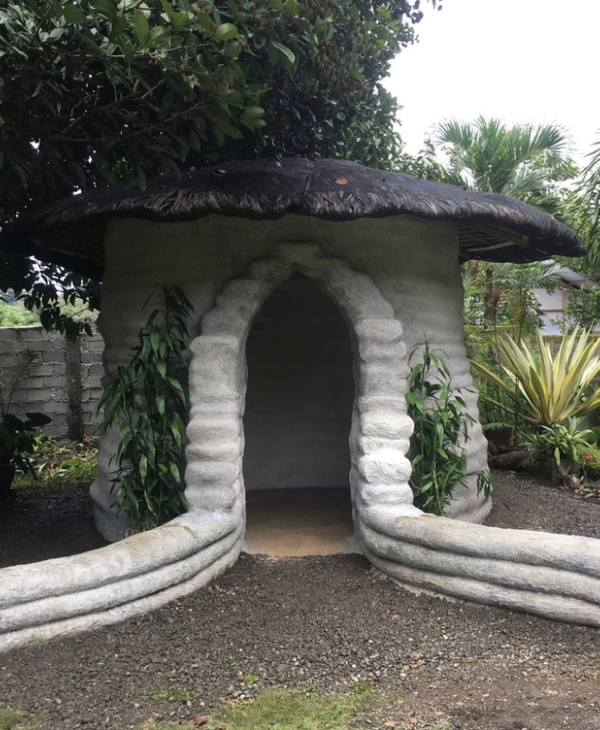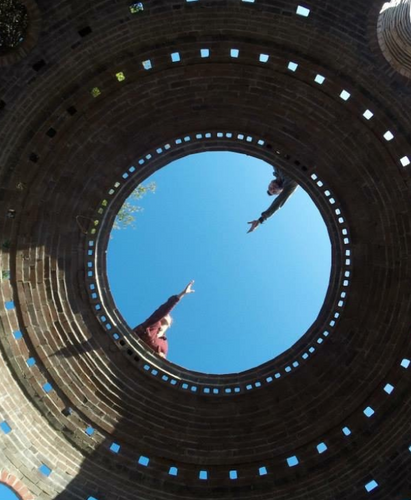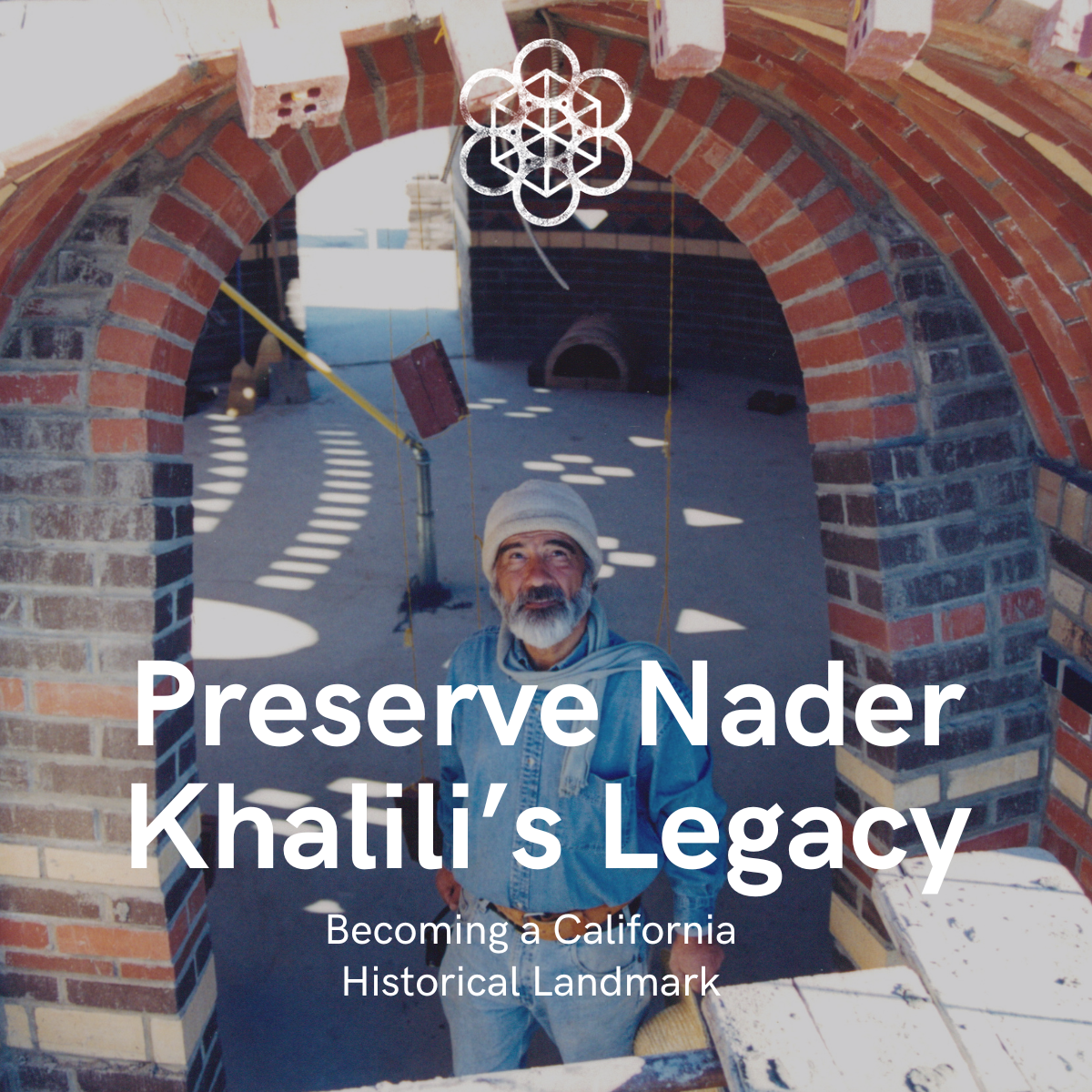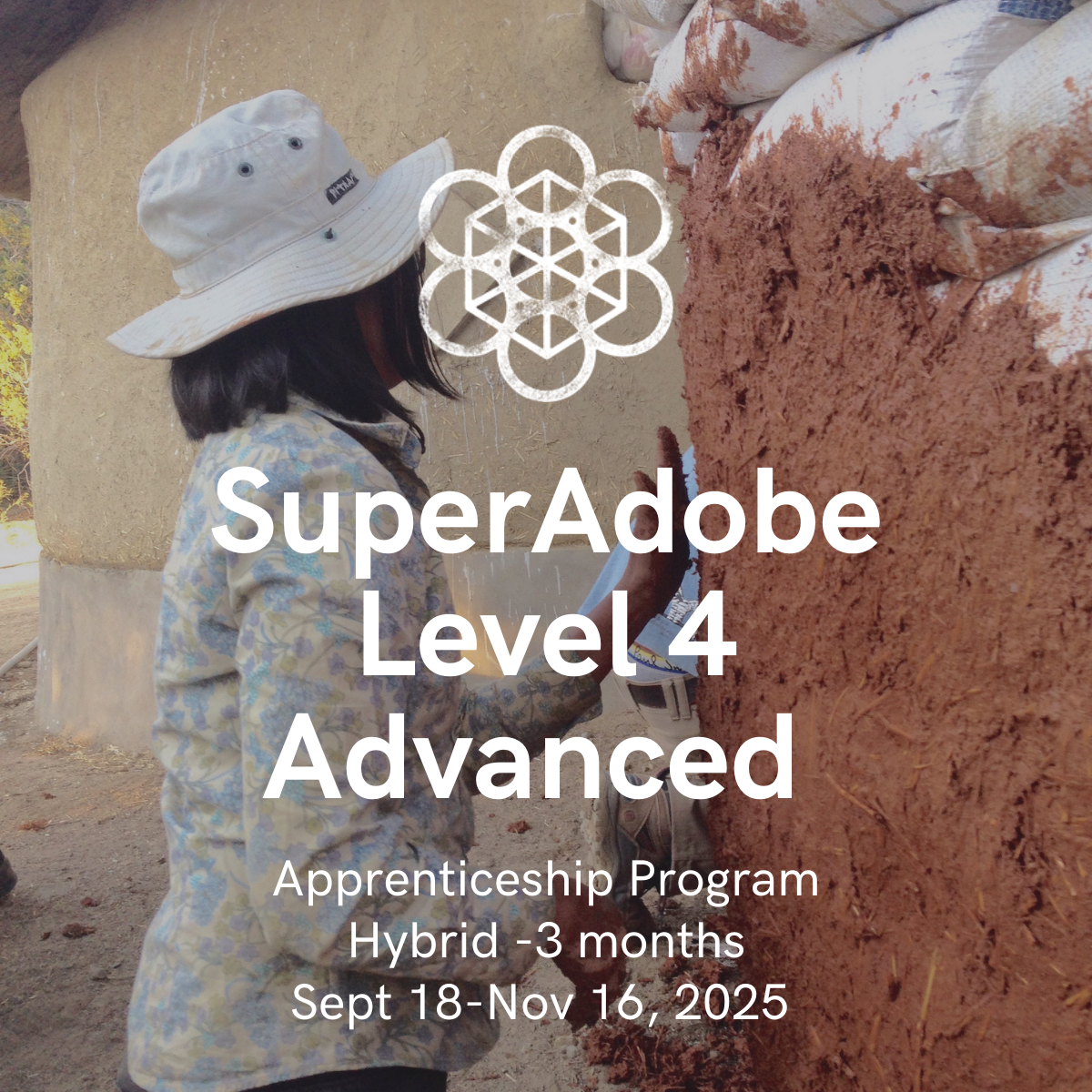After participating in a long-term apprenticeship at CalEarth, Beau Baconguis learned that SuperAdobe could be a sustainable solution to the shelter challenge faced in the Philippines. Learn about Beau's SuperAdobe buildings that have withstood hurricanes and how she is helping her community.
1. Tell us about your apprenticeship at CalEarth. Why did you decide to attend and what were your most important take-aways? When I first went to CalEarth in 2014, I was only interested in the permaculture course. I knew nothing about SuperAdobe or of CalEarth's work; I was simply aiming to complete my permaculture design course at a time that I thought fit the schedule I had planned. It so happened that the permaculture course was offered back-to-back with a SuperAdobe course. However, when I did the SuperAdobe workshop, I was so inspired by the solution it offered for the growing shelter problems my country had been experiencing.
I come from the Philippines and have seen how extreme weather events brought about by climate change have exacerbated the shelter problems in vulnerable communities. And, as a long-time environmental activist exposing problems, pushing for changes in policies, behaviors and attitudes, and [coming from a place] where real solutions are few and far between, SuperAdobe and permaculture were lightbulb moments for me. Earthen shelters have a great potential for rebuilding back better as a community and more sustainably.

The following year, I returned as a long-term apprentice for the vault program on a work exchange arrangement. Within that short period, I sharpened my building skills which were zero before I visited CalEarth. I left with much more hope and confidence that I would be able to teach communities how to build with their own hands and with resources they can find in their own localities.
2. The climate in the Philippines is very different to that in California where you learned to build. Why did you seek out the SuperAdobe building technique? The solution I was seeking was for many different environmental problems. I saw SuperAdobe as a sustainable solution to the shelter challenge and it was my entrypoint into this amazing world of building with earth. I thought that domes and arched structures would perform better in an earthquake zone and a country often visited by typhoons and strong winds. However, I continue to make adjustments to design and materials as my knowledge and experience building in the tropics grow. My latest designs include a roof to help protect the structures from huge volumes of rain. I am hoping to be able to work with local architects and engineers to further refine the designs so that they become more suited to the climatic conditions of the Philippines.
3. Have the SuperAdobe structures you built in the Philippines withstood hurricanes? The structures I built are new, the oldest being a dome that is close to 3-years-old. So far, they have withstood the regular typhoons and earthquakes. The first two domes were painted by the owners with elastomeric paint which is a common practice in the Philippines as a water-proofing material for roofs and walls exposed to heavy rain. However, monitoring will have to be done for these structures through the years. Also, they have not yet been exposed to super-typhoons.

4. Are there any special steps you've had to take with your buildings to ensure they are flood-resistant? In two areas, the structures were built on porous ground where water quickly drains and we used gravel bags for the foundation. In the others, I re-used tarpaulin from political advertisements or billboards to wrap the foundation bags. Drain canals were also dug to direct water away from the structures.
5. What is the traditional building style in the Philippines? Have you been able to combine those practices with the SuperAdobe method when building your structures? The traditional building method uses bamboo and palm or grass leaves as building material. My latest designs are experiments in SuperAdobe cylinders with coconut lumber and bamboo trusses and palm or grass leaves for a roof. A fishnet is then laid over and attached to the thatch to extend the life of the thatch and protect it from strong winds.
6. What is the purpose of your SuperAdobe buildings? Residential or commercial? I have built 4 permanent structures so far. The first is a 10ft diameter dome built together with CalEarth instructor, Brandon Evans. It serves as a sleeping space being offered in an Airbnb called Kapusod. The second is an 11ft diameter dome with a 6ft diameter apse, a private sleeper retreat with a bathroom for friends of the owner who are cancer survivors. This was named after a friend of the owner who later died of cancer but who was able to grace the "housewarming" of the structure. The third build was a complex of 6 cylinders with thatched roofs that serve as sleeping quarters for the Climate Resiliency Field School of the Municipality of Gerona in Tarlac Province and the Rice Watch and Action Network. It is a training center for farmers learning about climate-resilient farming and organic agriculture. The last one is my own personal space for meditation and working in my parents' garden. It is an 8ft diameter cylinder with a thatched roof.
 7. There is a breathtaking mural inside one of your buildings. How was that created? I can't take credit for the mural in the first dome Brandon Evans and I built. It was an idea of the owners and friends of theirs who were soil artists. They used different soil types and colors to paint on the interior wall of the dome.
7. There is a breathtaking mural inside one of your buildings. How was that created? I can't take credit for the mural in the first dome Brandon Evans and I built. It was an idea of the owners and friends of theirs who were soil artists. They used different soil types and colors to paint on the interior wall of the dome.
8. Do you have future projects lined up? What are you excited to build next using the SuperAdobe method? There's plenty of interest in SuperAdobe, however, not a lot are ready to make the commitment. There are no projects in the pipeline yet despite the many initial conversations about it. A long-term project that is still in the conceptualization stage is setting up my own learning center for SuperAdobe and permaculture.
9. You have been teaching, building and advocating all around the Philippines about the use of SuperAdobe. Talk about a specific person you connected with that you feel was helped. While all the build projects I've had were meaningful, each one with a special touching story, the most significant would be the SuperAdobe complex of sleeper cylinders in Gerona, Tarlac. I was contacted by the Rice Watch and Action Network (not just one person in particular), an organization I have worked with while campaigning for Greenpeace, when they saw my posts on social media. This was most meaningful to me because the project would benefit small farmers, a sector in Philippine society that are often the poorest and most neglected. There is a personal attachment as well for me because their issues, Ecological Agriculture, GMOs and chemical farming are issues I've campaigned on for decades. Besides, it also meant that the workforce for this particular project would be the local community. It was also an unusual work environment for the all-male build crew to have a tiny woman in her fifties (me) leading the build. Lastly, the complex is located in the middle of rice fields and vegetable farms and it looks like it belonged there.
10. If you could describe your SuperAdobe buildings in one word, what would it be? Experimental




